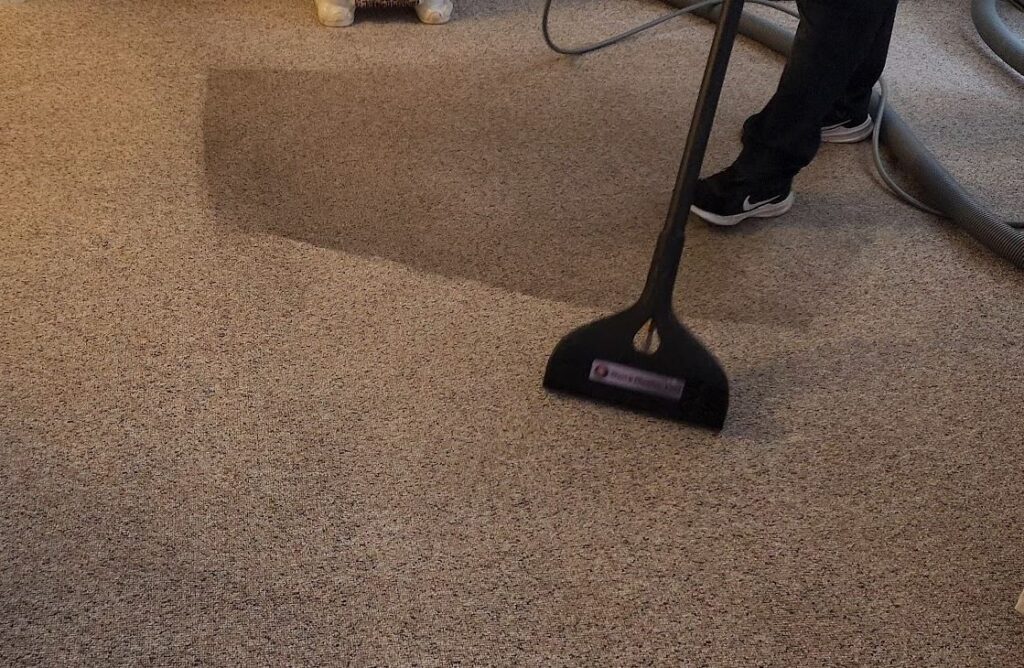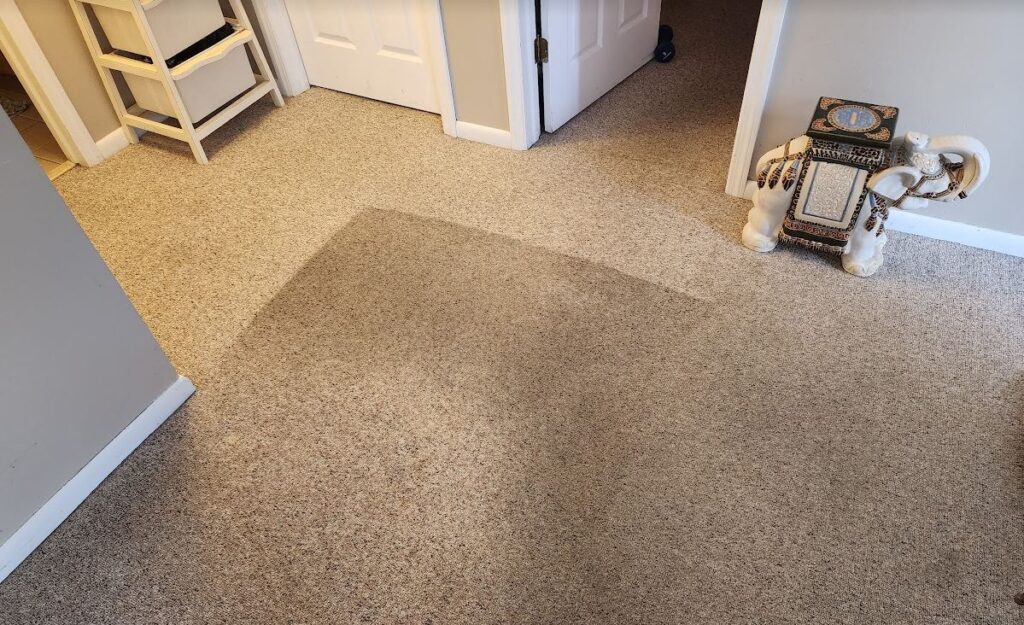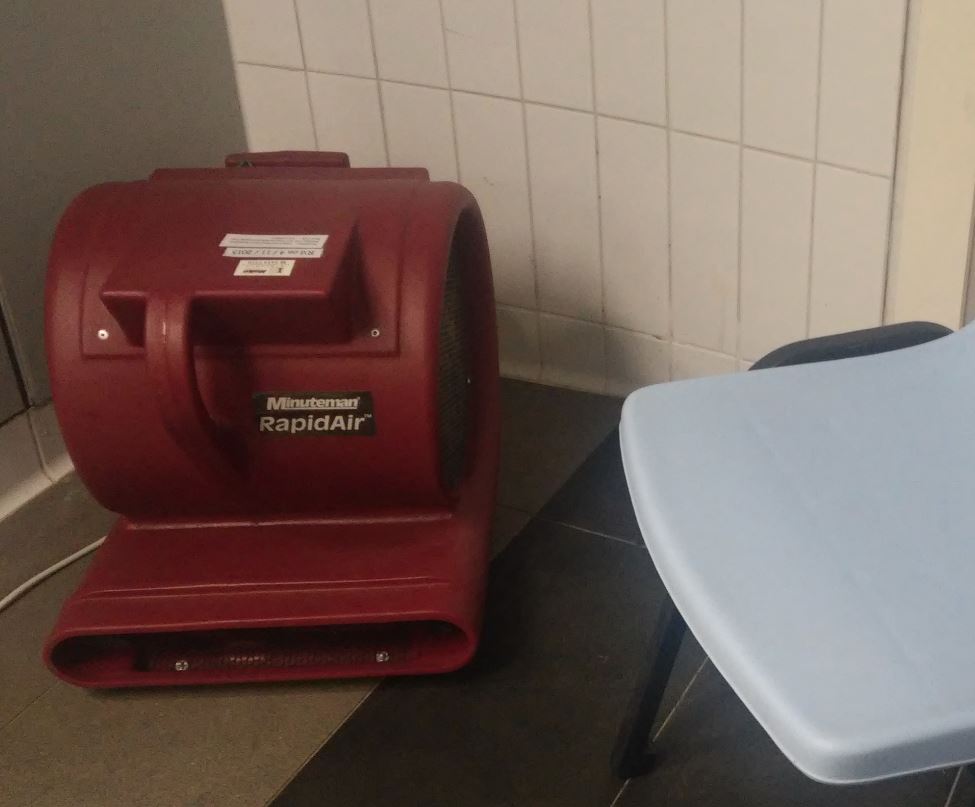
Is my carpet ruined if it gets wet? We hear this question often and the answer is, not necessarily. It very much depends on the type of carpet and the amount of water that was involved. Timing is really the most important factor. That is, the length of time the carpet has been saturated.
In the winter in Ocean County and Monmouth County, New Jersey, the pipes might freeze and unfortunately they sometimes burst. This can cause flooding in homes and businesses during a time of year where it may be difficult to keep the windows open and dry your carpet out effectively on your own.
Using a moisture barrier in carpet padding can provide extra protection against spills and moisture, helping to prevent water damage and mold growth. This is especially beneficial in homes with pets or small children.
Even a shag carpet with soaked padding might be saved by a qualified and experienced water damage repair company like GM Carpet Care.
If the carpet got completely soaked there is a good chance that the padding underneath will become wet and will start to grow mold. In this case, you may think the carpet will have to be replaced. The truth is that the faster you act to address the issue and start drying your floors, the more likely it is that you will be able to save the carpet and reduce the damage.
If only a small amount of water was introduced, it should be possible to dry out the padding but work quickly or you may need to replace the affected section of carpet.
What Factors Determine If A Carpet Is Ruined When It Gets Wet, Including Synthetic Fiber Carpet Pads?
There are several things that play a role in determining whether or not a carpet is ruined when it gets wet. These can include things like the type of carpet material, how long the carpet remains wet, and the source of the water that affects the carpet.
The condition of the carpet backing can also impact the overall durability and performance of the carpet when it gets wet. Stretching the carpet backing can lead to damage over time, particularly in high-traffic areas.
One important factor to consider is the type of material used to make your carpet. Some materials, such as nylon or wool, tend to be more resilient to water than others, such as polyester blends. So if you have a carpet made from one of these more durable materials, it may be less likely to get damaged by water than carpets made from other materials.
Another important factor is how long your carpet stays wet. If your carpet only gets wet for a short period of time, you may be able to dry it out and avoid damage. Don’t just walk away and hope it dries out on its own. If the carpet gets wet for an extended period of time or is exposed to standing water, this can make it more difficult for the carpet to recover. If you aren’t sure or have questions, contact us about your situation.
How Long Does It Take For Mold To Grow In Wet Carpet?
Mold may be able to begin growing on wet carpet within 24 hours, depending on a number of different factors. Mold will often grow faster in warmer temperatures and if the humidity is high.
Fiber carpet padding can be particularly susceptible to mold growth if not dried quickly. Mold needs water, oxygen, and organic material to grow, so if you can dry out the carpet as quickly as possible and remove any organic material (such as pet hair or dirt), you can slow down the growth of the mold. If you see any signs of mold growth or suspect that your carpet has been exposed to water for too long, it is best to have a professional clean and dry the carpet as soon as possible to prevent water damage

How to dry a wet carpet
If you do find that you get your carpet wet and you want to try to save it, there are a few things you can try. First, use towels or cloths to soak up any excess water on the surface of the carpet. Then make sure the room is well ventilated and you have good air circulation around the wet carpet so it can dry out more easily.
After this, use an air dryer or fan to help dry out any remaining moisture in the carpeting. If the carpet is still soaked or if you notice that your carpet is still damp the next day, we suggest contacting a professional for help. They may be able to offer additional advice on how best to restore your wet carpet and make sure it is not damaged.
A professional will use a variety of techniques to dry carpeting, depending on the severity of the water damage, to extract as much water as possible. They may also use drying equipment and fans to help speed up the process and get water out of your carpet. Specific drying techniques are required for foam padding to prevent damage and ensure complete drying.
If you have water damage, it’s important to seek help as soon as possible. The longer the water sits in your carpet, furniture, or wool area rugs, the more damage it can do.
Will soaked carpet damage the carpet pad?
Yes, if the carpet pad gets wet it will start to grow mold and mildew. The mold and mildew will cause the pad to start to decompose, which will then damage the carpet. It’s important to dry out both the carpet and the pad as soon as possible to prevent any damage.
Bonded foam carpet pads are a durable and eco-friendly option for high-traffic areas, known for their ability to retain supportive properties over time and their composition from recycled materials.
The best drying process for carpet padding will vary depending on the specific type of padding and the conditions of the environment in which it is being dried.
Some general tips to dry carpet padding yourself include using fans and air conditioning to circulate air throughout the area, opening up windows and doors to allow fresh air to flow in, and using dehumidifiers to remove moisture from the air.
Since the carpet padding is under your carpet, it’s hard to make sure you have adequate air flow to get it completely dry. When professional carpet cleaners like GM Carpet Care come to deliver water damage repair services, we will lift the carpet and use powerful professional fans to completely dry your floors.
This will reduce your chances of developing mold and can save your property from damage including swelling and buckling of wood floors and subfloor material.

The benefits of having a water-resistant carpet with a moisture barrier
If your carpeting is susceptible to getting wet, there are a few benefits that you may be interested in. For one thing, water-resistant carpets can help reduce the risk of damage to your carpet if it does get wet or exposed to moisture. There are a few ways that carpets can be made water resistant.
One way is to use a synthetic fiber like nylon, which is inherently water resistant. Another way is to treat the carpet with a waterproofing agent. And finally, some carpets are made from natural fibers like wool or cotton, which are already water resistant.
Using synthetic fiber carpet pads can further enhance the water resistance and durability of carpets, making them suitable for high foot traffic areas and commercial settings. Another benefit of this type of material is that it can be easier to clean and maintain, as it is less prone to stains.
So if you are looking for an alternative solution to traditional carpeting and want something that is more durable and easier to care for, you may want to consider investing in a water-resistant carpet instead.
What to do When Your Carpets Get Wet in New Jersey
You might think your carpets will be ruined if they get wet, but this depends on a few things like the type of carpet material and how long it stays wet. If you’re worried because your carpet got wet, there are a few things you can try to dry it out. But time is important as mold can develop quickly. If the carpet is still damp after the next day, contact us right away for professional for assistance.
Selecting the right carpet padding during the carpet installation process is crucial to enhance durability and prevent water damage.
Need Help With A Wet Carpet in New Jersey? Contact Us Now or Call 732-929-9669
Frequently Asked Questions
Q: Can I use hot air movement to dry wet carpet fibers?
A: Yes, hot air can be used to dry wet carpet fibers. The high temperature of the air will help to evaporate the water from the fibers, and this will help to restore the carpet to its original condition. However, it is important to make sure that you blow air in the correct direction.
When drying memory foam carpet pads, it is crucial to ensure complete drying to prevent damage and maintain their luxurious feel. If the hot air is blowing towards the backing of the carpet, it could damage this surface. It is therefore recommended that you use a fan or an industrial blower to direct the hot air towards the wet fibers.
Q: Does baking soda help wet carpets?
There are a few schools of thought on this. Some say that baking soda will help to absorb the water and pull it out of the carpet, while others say that it will only serve to make the stain worse.
One challenge with drying a thick carpet pad is that it can retain moisture longer, potentially leading to mold or mildew. Baking soda can help absorb moisture from thicker padding materials, making the drying process more effective.
The best way to test this is to try it out on a small, inconspicuous area of your carpet and see if it makes a difference. If it does, then pour baking soda over the entire wet area, wait about 15 minutes, and then vacuum it up.
Q: What is the best method of carpet cleaning if I smell a foul odor?
A: The best way to clean carpets if you smell a foul odor is to deep clean them. This can be done by renting a steam cleaner or using an enzyme-based cleaner.
Selecting the right carpet padding is crucial to prevent odors and enhance the overall performance of the carpet.
If the odor is caused by bacteria, then deep cleaning will help remove the bacteria and get rid of the smell. If the odor is caused by a stain or other substance, then enzyme-based cleaners will help break down the substance and get rid of the smell.
Q: How to make sure my carpet is completely dry and there is no trapped moisture?
Make sure to blot up as much moisture as possible with a towel, and then use a fan or air conditioner to speed up the drying process. You can also place bowls of rice in the affected areas, as the rice will absorb any remaining moisture.
Using a thinner carpet pad in high-traffic areas can prevent moisture retention and ensure complete drying, as it allows for better air circulation and reduces the risk of mold growth.
Q: Will a wet vac help remove lingering moisture?
A wet vac is an ideal solution for removing lingering moisture. Its powerful suction and ability to filter out wet particles makes it the perfect tool for keeping everything around your home dry and free from any wet residue. Unlike other methods of moisture removal, wet vacs can be used over and over again, making them an economical way of combating damp patches or wet spots in your home.
Most carpet pads fall between ¼-inch and ½-inch thick, with a common choice of 7/16-inch. The thickness and density of carpet pads can significantly impact moisture removal, as well as the durability and sound dampening of your carpets.
Plus, you won’t have to worry about mold or mildew buildup due to lack of humidity; the wet vac will take care of that problem! Overall, investing in a wet vac will help resolve any lingering moisture issues you may encounter throughout your home.
